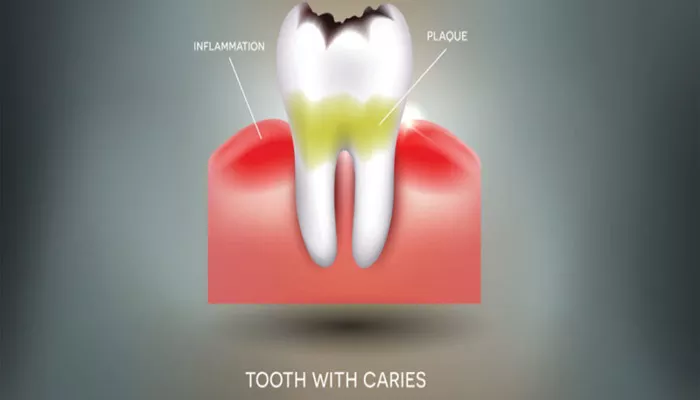Teeth whitening is a popular cosmetic procedure that promises a brighter, more radiant smile. With countless products and treatments available, from over-the-counter whitening strips to professional dental procedures, many people are eager to achieve whiter teeth. However, a common concern is whether these whitening treatments could potentially damage the enamel, the protective outer layer of the teeth. This article aims to explore the relationship between teeth whitening and enamel health, examining the science behind whitening products, the potential risks, and how to ensure a safe whitening process.
The Composition of Tooth Enamel
To understand the impact of whitening on enamel, it is essential to first comprehend the nature of tooth enamel. Enamel is the hardest substance in the human body, composed primarily of hydroxyapatite, a crystalline calcium phosphate. Its main functions are to protect the softer dentin layer beneath and to withstand the mechanical forces of chewing. Despite its strength, enamel can be susceptible to damage from various factors, including acidic foods, abrasive materials, and certain dental treatments.
SEE ALSO: What Is The Best Whitening Mouthwash?
How Teeth Whitening Works
Teeth whitening treatments generally fall into two categories: chemical whiteners and physical whiteners. Chemical whiteners, such as hydrogen peroxide or carbamide peroxide, are the most common and are found in many over-the-counter products and professional treatments. These agents work by breaking down stains and discoloration on the tooth surface into smaller, less visible molecules. The process also involves a reaction with the organic molecules in the stains, resulting in a lighter shade of white.
Physical whiteners, like abrasive whitening toothpastes, use mild abrasives to scrub away surface stains. While these do not affect the enamel chemically, they can cause wear and tear if used excessively or aggressively.
The Potential Risks to Enamel
1. Acidic Nature of Whitening Agents
The primary concern regarding enamel damage from teeth whitening arises from the acidic nature of many whitening agents. Hydrogen peroxide and carbamide peroxide, while effective, can lower the pH level in the mouth, creating an acidic environment. Acidic conditions can weaken the enamel, making it more prone to erosion and sensitivity. This effect is generally temporary, but frequent use of highly acidic whitening products can exacerbate enamel degradation over time.
2. Abrasion from Whitening Products
Some over-the-counter whitening products contain abrasive substances that, when used excessively, can wear down enamel. Abrasive whitening toothpastes or powders can remove surface stains but may also scratch the enamel surface, leading to increased sensitivity and a higher risk of cavities. It is crucial to choose products with a low abrasive index and use them as directed to minimize this risk.
3. Whitening Procedures in Professional Settings
Professional whitening treatments conducted by dentists often use higher concentrations of bleaching agents than those found in over-the-counter products. While these treatments are typically safe when performed by a trained professional, the risk of enamel damage still exists if the procedure is not managed properly. Overuse of high-concentration agents or improper application can lead to enamel erosion and increased tooth sensitivity.
Mitigating The Risks
1. Choosing the Right Products
Selecting the appropriate whitening product is crucial for preserving enamel health. Look for products with lower concentrations of hydrogen peroxide or carbamide peroxide and those that are approved by dental associations. Products labeled as “enamel-safe” or “sensitive” may be less likely to cause damage.
2. Following Instructions
Adhering to the manufacturer’s instructions for use is essential. Overuse of whitening products, whether over-the-counter or professional, can increase the risk of enamel damage. Be sure to follow the recommended application times and frequency to avoid excessive exposure to whitening agents.
3. Consulting with a Dentist
Before beginning any whitening regimen, it is advisable to consult with a dentist. A dental professional can evaluate your oral health, provide recommendations based on your specific needs, and perform treatments that minimize the risk of enamel damage. Dentists can also monitor the condition of your enamel during and after the whitening process.
4. Maintaining Good Oral Hygiene
Good oral hygiene practices, such as regular brushing with fluoride toothpaste, flossing, and routine dental check-ups, can help maintain enamel health and prevent damage. Fluoride strengthens enamel and can help counteract the effects of acid from whitening products.
5. Using Desensitizing Products
If you experience sensitivity during or after whitening, consider using desensitizing toothpaste or products recommended by your dentist. These can help alleviate discomfort and protect the enamel from further damage.
Conclusion
Teeth whitening can effectively enhance the appearance of your smile, but it is important to be mindful of its potential impact on enamel health. While whitening products can pose risks, choosing the right products, following instructions, and consulting with a dentist can help minimize these risks. By taking these precautions, you can achieve a brighter smile while keeping your enamel strong and healthy.

